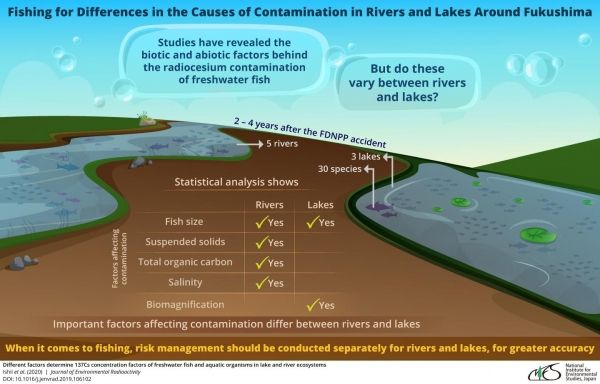In 2011, when the Fukushima Dai-ichi Nuclear Power Plant (FDNPP) accident occurred, radioactive materials leaked out into the surrounding land and water bodies, and these became highly contaminated. Consequently, to ensure no imminent risks to the health and safety of the people living in the region, fishing in lakes and rivers in the area was restricted, with no indication of when the ban will be lifted. Scientific efforts to measure the contamination levels of the natural resources of the region, and predict when it will become safe to use them, began soon after the incident and have been ongoing. Research—conducted in the aftermaths of the FDNPP incident and others that came before it, such as the Chernobyl accident—has, so far, determined the biotic and abiotic factors affecting the accumulation of radionuclides in fish. The insights thus gained have helped predict and manage contamination in the environment at Fukushima.
But what remains to be studied is whether these underlying factors differ among ecosystems, and if they do, then how. Addressing this question, a group of scientists from the National Institute for Environmental Studies, Japan, led by Dr Yumiko Ishii, analyzed the monitoring data of 30 species of fish and aquatic organisms from five rivers and three lakes in Fukushima. This they did two to four years after the FDNPP accident. In their study, published in Journal of Environmental Radioactivity, they statistically correlated radiocesium measurements with a number of biotic and abiotic factors. Radiocesium, particularly cesium-137, has a long half-life, or decay period, of about 30 years, and is the primary contaminant in the area. As Dr Ishii explains: “After the FDNPP accident, radiocesium has become a major contaminant in Fukushima, and the risk of exposure to its radiation has become a topic of considerable concern.”
Read more at National Institute for Environmental Studies
Image: When it comes to fishing, risk management should be conducted separately for rivers and lakes, for greater accuracy. (Credit: NIES)


